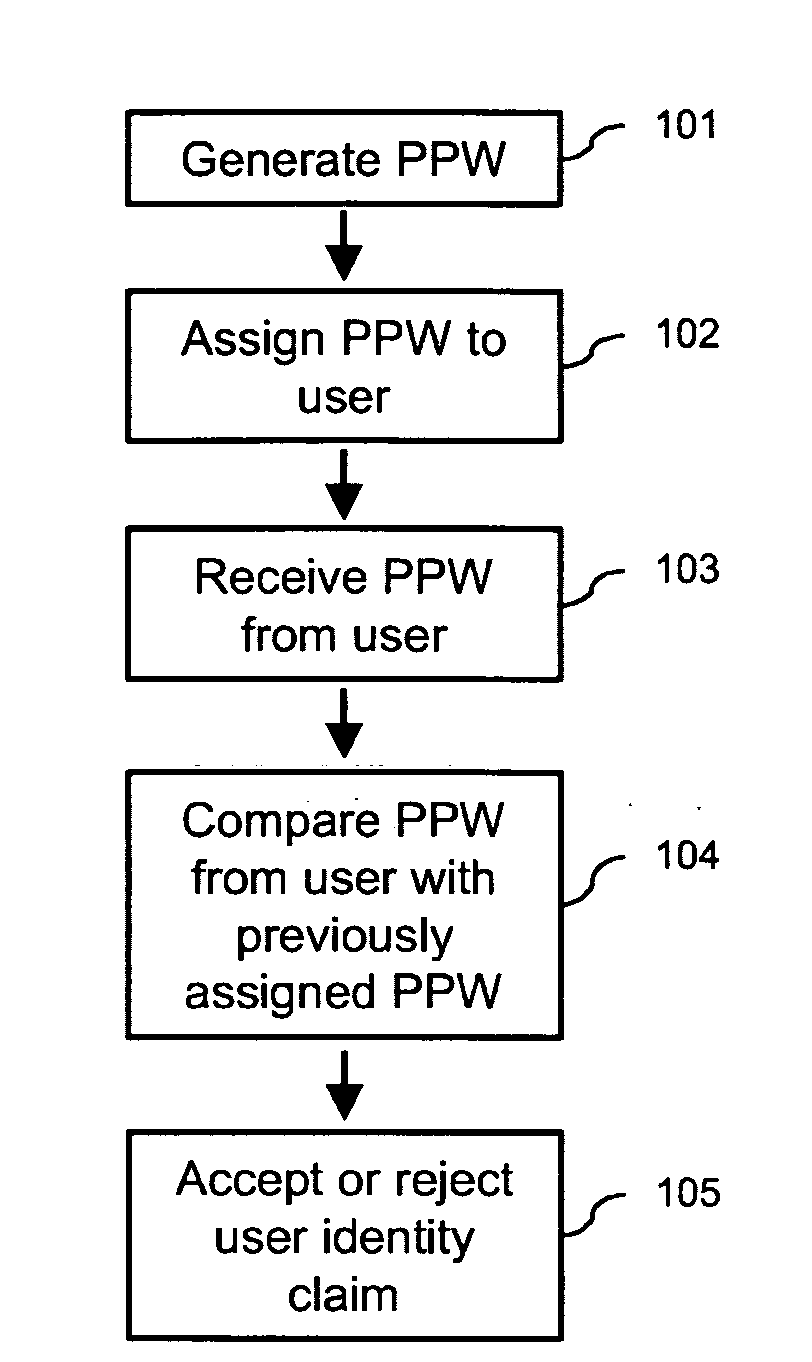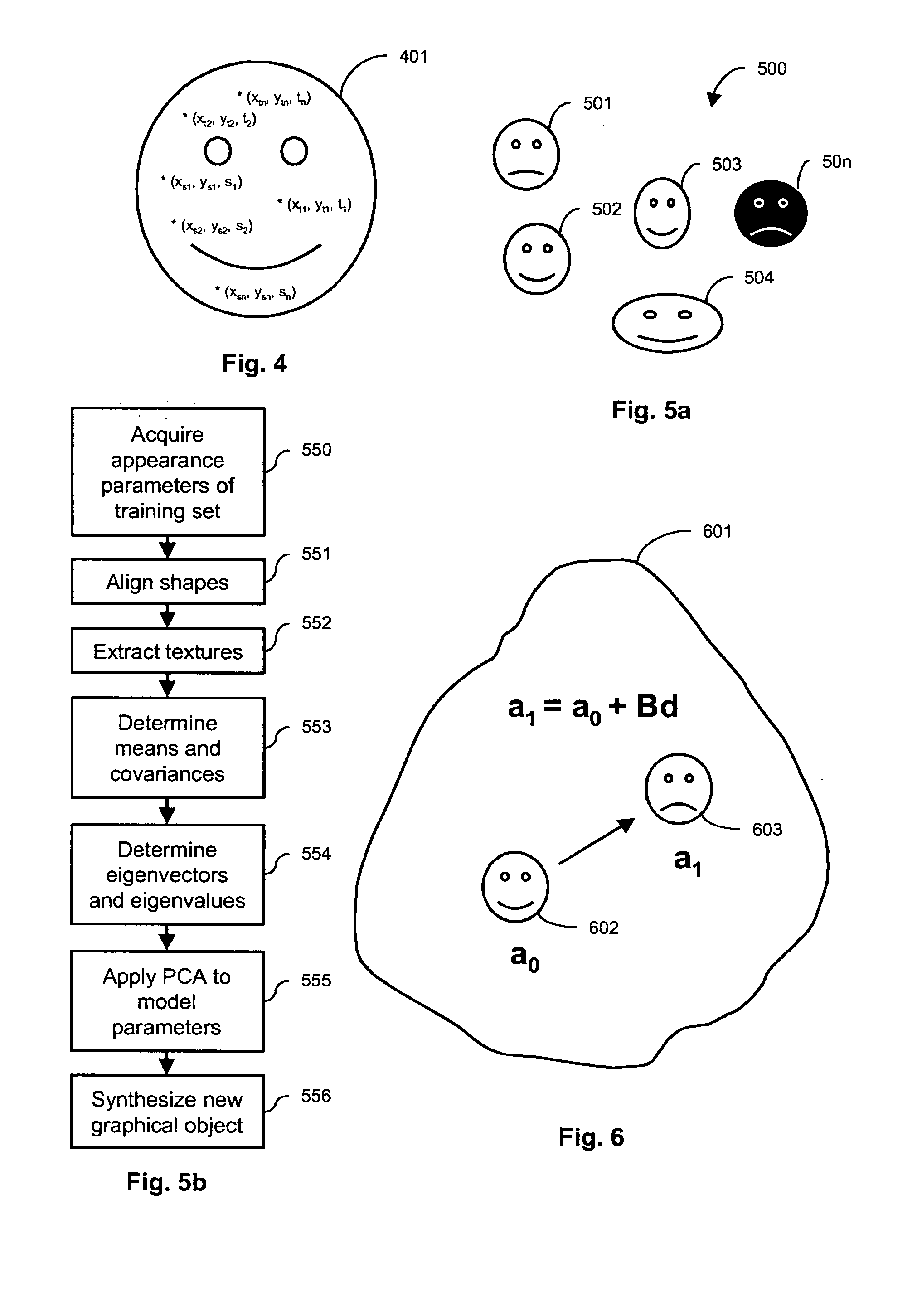User authentication method and system and password management system
a user authentication and password management technology, applied in the field of perceptual password-based user authentication methods, can solve the problems of reducing the security obtained through passwords, difficult to remember passwords, and unadaptable alphanumeric passwords to the way humans process information
- Summary
- Abstract
- Description
- Claims
- Application Information
AI Technical Summary
Benefits of technology
Problems solved by technology
Method used
Image
Examples
second embodiment
[0117]In FIGS. 7a-c, the authentication method according to the present invention is shown, where user authentication is performed by means of so-called recall authentication.
[0118]Referring now to FIG. 7a, a perceptual password is generated in a first step 701 and assigned to a user in a second step 702 as previously described in general terms in connection with FIG. 1. These steps describe the enrolment procedure of the recall authentication scheme, which will now be described in greater detail with reference to FIG. 7b. According to the recall authentication scheme the user, during the enrolment procedure, learns to recognize and synthesize one or several password objects comprised in corresponding perceptual passwords. These password objects may be automatically generated by the system or created through user-provided input. The password object(s) 720 may, for example, be synthesized using the statistical model detailed above and may, for example, be presented one by one on a gr...
third embodiment
[0121]In FIGS. 8a-c, the authentication method according to the present invention is shown, where user authentication is performed by means of so-called recognition authentication.
[0122]Referring now to FIG. 8a, a perceptual password is generated in a first step 801 and assigned to a user in a second step 802 as previously described in general terms in connection with FIG. 1. These steps describe the enrolment process of the recognition authentication scheme, which will now be described in greater detail with reference to FIG. 8b. According to the recognition authentication scheme the user, during the enrolment procedure, learns to recognize one or several password objects comprised in corresponding perceptual passwords. These password objects may be automatically generated by the system or created through user-provided input. The password object(s) 820a-i may, for example, be synthesized using the statistical model detailed above and may, for example, be presented together or one b...
first embodiment
[0132]In FIG. 9, a user authentication system according to the present invention is schematically illustrated.
[0133]Referring to FIG. 9, a user authentication system 901 is shown comprising a perceptual password management system 902 and a number of enrolment / verification terminals 903a-n, each having a graphical display 904a-n and user input means, here in the form of a keyboard 905a-n. The perceptual password management system 902 includes a microprocessor 906, which is adapted to generate perceptual passwords and to assign one or several of these perceptual passwords to a user, and a memory 907 for storing information indicative of the assignment. An assignment item stored in the memory 907 could, for example, include a user ID and a set of deviation parameters for enabling generation of the perceptual password assigned to the user. The assignment item may further include model parameters, which may be different for different groups of users, or the assignment item may include th...
PUM
 Login to View More
Login to View More Abstract
Description
Claims
Application Information
 Login to View More
Login to View More - R&D
- Intellectual Property
- Life Sciences
- Materials
- Tech Scout
- Unparalleled Data Quality
- Higher Quality Content
- 60% Fewer Hallucinations
Browse by: Latest US Patents, China's latest patents, Technical Efficacy Thesaurus, Application Domain, Technology Topic, Popular Technical Reports.
© 2025 PatSnap. All rights reserved.Legal|Privacy policy|Modern Slavery Act Transparency Statement|Sitemap|About US| Contact US: help@patsnap.com



